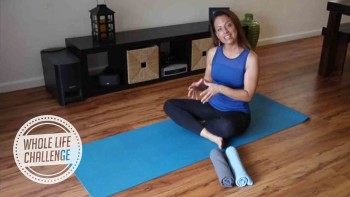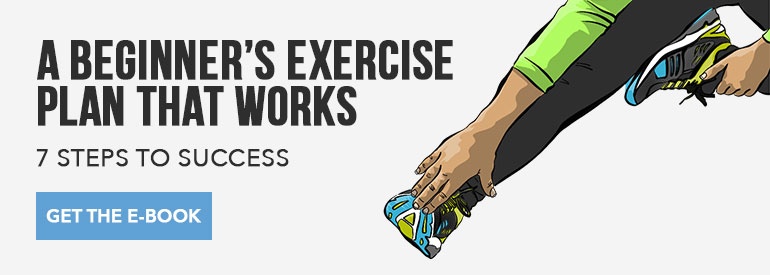“No Butt Syndrome” Is a Functional (Not Aesthetic) Problem
If you are interested in achieving better gluteal development, you’ve done squats and lunges until the cows come home, and you are still dealing with “no butt syndrome,” then this exercise is for you.
The intention of this exercise is to activate the glutes while the natural curves of the spine are supported with towel rolls. By using the towel rolls and laying on the floor for this exercise, you will prevent compensatory muscles from taking over, encouraging better facilitation of the gluteal muscle, better posture, and a more functional position for the pelvis.
How to Get Your Glutes Working Again
First, you will need two towels that you can roll up to form two 3” diameter rolls. Next, lay down on the floor or a yoga mat. Place one towel roll under your neck, and the other towel roll under your lower back, opposite your belly button.
Relax into this position for a minute before you begin the exercise. Notice the feeling in your lower back, hips, neck, and spine. The towel rolls are supporting the natural curvature of the spine, and the musculature of your hips and spine are able to focus on some work that they are not used to doing.
You may need to adjust the size of your towel rolls before beginning the exercise. They should not feel too intrusive or at all painful, but they should also not be so small you can’t feel them at all. Find the perfect roll size so you feel comfortable, supportive pressure on both your low back and your neck.
- Position your feet so your knees are bent at a 45-degree angle and your feet are hip width apart, pointed straight ahead. Hip width apart means about 6” between the heels, and the feet are straight when the outer edges of the feet point straight ahead. This foot and leg position is critical in order for your glutes and hip muscles to get the proper stimulus in this exercise. If you need to sit up to look at your feet to make these adjustments, please do so.
- Place your arms out to the sides at a 45-degree angle with palms up. This will allow your shoulders to open up against the floor as you are doing the exercise.
- Squeeze and release your buttocks muscles without contracting your abdominal muscles. This may feel difficult at first and may take some practice.
- Repeat for a total of 60 repetitions of gluteal contractions.
The proper tempo is one second to contract, one second to hold, and one to two seconds to release. By emphasizing all three phases of this contraction, you can maximize the benefit you are getting from doing the exercise.
Be sure to avoid the following biggest mistakes:
- Don’t let the knees flare out or collapse inward. Keep the knees in line with the hips. A good cue for this is to imagine you are holding a softball between your knees.
- Don’t contract the stomach muscles to “help” you to get a better contraction. Keep the stomach out of the equation here.
Developing better glutes and better muscular strength in the hips is a process that takes time. Don’t expect to have a perfectly defined butt as a result of just doing this exercise. But you can expect to feel more stable during activities like going up and down stairs. This exercise will complement and improve other glute exercises you do, such as squats and lunges, and will help to make them more effective.
Try doing this exercise either first thing in the morning to wake up your glutes before going about your daily activities, or as a cool down after a workout. Just be sure to do it consistently.




